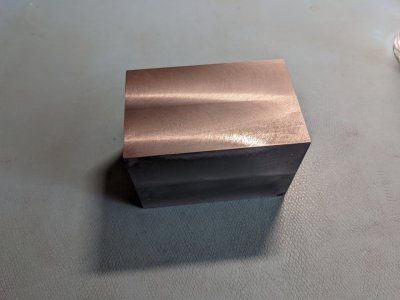As a follow up, I did some machining on my mill of the rectangular piece. Thanks for everyone's advice. Fly cut four of the faces down to size. Had to make a lexan shield to keep me from being peppered. Covered the mill table with aluminum foil which helped with clean up. Chips flew everywhere, a lot of vacuuming needed to be done.
View attachment 395163
I might add one bit of advice, and that is to wear a respirator, or at least some sort of mask. Not only do the little chips fly, but so does the dust. I didn't wear a mask, must of received a big dose of dust in the lungs and had a very bad night's sleep that evening. Next evening was fine. Lesson learned.



